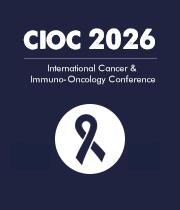Title : Bridging gaps in lung cancer diagnosis and surveillance: Gap analysis and development of new registers and algorithms for lung cancer identification and care in Malawi
Abstract:
Background: In Malawi, lung cancer is under-diagnosed and under-reported due to overlapping symptoms with tuberculosis, limited diagnostic capacity and fragmented data systems. Existing cancer registry tools inadequately capture lung cancer- specific indicators, and frontline healthcare workers lack clear diagnostic and referral pathways. To address these gaps, the Malawi Lung Cancer Control Project (MLCCP) team undertook a review of existing tools to identify limitations and develop new standardized instruments to strengthen the lung cancer care cascade, data capture and reporting.
Methods: Between June and August 2025, we conducted an iterative review of available screening and radiological cancer registry tools used across all central hospitals in Malawi and in other sub-Saharan African countries to identify existing gaps in the capture of relevant lung cancer epidemiology data. The review was conducted in collaboration with a diverse team of oncologists, epidemiologists, pathologists, radiologists, medical officers, laboratory technologists, and monitoring and evaluation experts, ensuring a comprehensive assessment of gaps in the cancer registry system.
Gaps were measured by comparing existing registry and diagnostic tools against International Agency for Research on Cancer (IARC), a specialized cancer research agency of the World Health Organization (WHO), and clinical best practices.
Results: Key gaps identified included the absence of lung cancer specific indicators in existing tools, lack of standardized screening and referral pathways, limited integration with DHIS2, underutilization of CanReg5 for lung cancer data and incomplete capture of treatment outcomes and mortality. The review process produced a package of 17 standardized tools: 9 new tools including a Ward Register, a Chemotherapy Register, Lung Cancer care cascade algorithms, Community Case Finding Form, Active Case Finding Forms, Initial and Return Encounter Forms and Death Form; and 8 revised pre-existing tools including the OPD Register, Oncology Rehabilitation Register, CT and Radiology Request Forms, Blood Transfusion Register, Blood sample Register and the digital CanReg5 platform and its corresponding Notification Form adapted for lung cancer data.
Conclusion: Effective cancer control requires not only diagnostics but also robust systems for data capture, analysis and use. The development of new lung cancer registers and diagnostic and referral algorithms represents a significant step toward improving reporting accuracy, and will facilitate early case identification, provide standardized decision pathways for referral, diagnosis and reporting, and enhance systematic documentation of patient pathways from case identification and diagnosis to treatment. Together, these instruments address critical data and clinical gaps, enabling stronger cancer surveillance and more timely patient management. By bridging gaps in diagnosis and reporting, these tools lay the groundwork for more effective lung cancer control, policy planning and integration into broader national health strategies.
Keywords: Lung cancer, cancer registry tools, algorithms, diagnosis, reporting, Malawi, referral pathways, health information systems, DHIS2.



